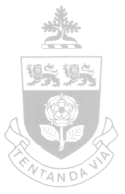The Theosophical Allegory
by Aisha Gilani
Home > Various Interpretations of Oz > The Theosophical Allegory
At a faculty colloquium presented by David B. Parker, Assistant Professor of History, at Kennesaw State University, he suggested a relationship between certain themes, episodes, and characters in the Oz stories and L.Frank Baum's theosophical beliefs. Theosophy was a sort of New Age cult religion that was popular among certain groups of people a hundred years ago; Baum was a theosophist. Parker explains that the basic tenets of theosophical thought are relatively simple and included such notions as cosmic unity, planetary chains, human evolution within seven planes of existence, reincarnation, etc. It was upon re-reading Baum's The Wonderful Wizard of Oz that led Parker to discover the relationship between Baum's Oz writings and his theosophical beliefs. Parker states that given its closeness to Asian religion, theosophy might help explain Baum's "dainty China country", the title of one of the chapters in The Wonderful Wizard of Oz. Through more research, David Parker came across John Algeo's work on Baum and theosophy. Finally, Parker gives some specific examples to illustrate how Baum's belief in theosophy could have several other implications for his writings.
These include:
1) Many early theosophists were feminists and theosophy stressed
a basic equality of the sexes. And, most of the major characters
in the Oz series were female
2) One can see a similar possible theosophical
reflection in Baum's anti-intellectualism. For example, as Parker
explains, the Scarecrow, who mistakenly thinks he needs brains
("head-learning"), actually gets by very well without
brains, and is in fact the "smartest" of the travellers
on the Yellow Brick Road
3) The theosophical belief in reincarnation
can be seen in how Baum's characters sometimes change identities,
which is the case of Tip, the young boy who is the main character
in The Marvelous Land of Oz. At the end of the book, Tip is transformed
into Ozma. And, furthermore, as Parker points out, "Ozma"
is similar to "Atma", the theosophists' name for the
Spirit, the highest level of man's evolution
4) Colours were also important to early
theosophists, says Parker. Charles M. Leadbetter, an important
shaper of early theosophical thought, came up with a list of colours
and their correspondences with the astral body. Yellow meant "intellect"
while emerald green stood for "versatility, ingenuity and
resourcefulness". So, as Parker explains, Dorothy on her
quest, follows the Yellow Brick Road (intellect) and discovers,
at the end, only a humbug (the Wizard)--"head-learning"
alone is useless. Only after Dorothy applies the lessons of the
Emerald City--"versatility, ingenuity and resourcefulness,
applied unselfishly"--does Glinda tell Dorothy that she always
had the power to return home.
Home | About Baum | Different Forms of Oz | Various Interpretations of Oz | References

|
Disclaimer © 2003 - 2004 by class of SOSC 4319 at York University |